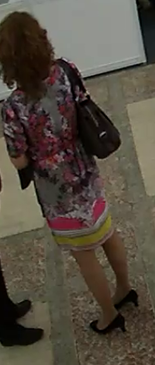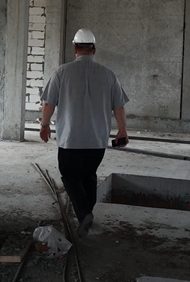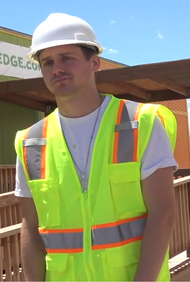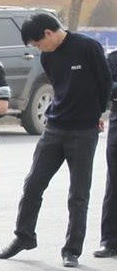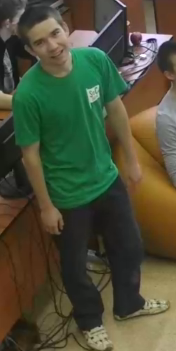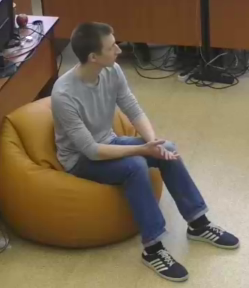Requirements and recommendations🔗
Hardware and software
Warning
Eocortex Neural Networks package must be installed before it will be possible to use neural networks-based features of the module.
Warning
The neural network works with the 64-bit version of Eocortex only.
Warning
When upgrading Eocortex to another version, it is necessary to also upgrade the Eocortex Neural Networks package to the corresponding version.
The following is required for the Advanced (with GPU) mode:
A processor that supports AVX instructions;
An NVIDIA video card (GPU) with the computation capacity index of at least 6.5 and with at least 4 Gb of memory; the parameters and performance of the video card must be similar or better than those of NVIDIA GTX 1650 Super model;
Version of the video card driver at least 460;
Swap file at least half of the total RAM size.
If the package will be installed on a virtual machine, it may additionally be required to:
Enable support for AVX instructions in the guest machine settings;
Use GRID drivers for GPU virtualization.
Warning
When using a video card, the stable operation of the module is guaranteed on operating systems Windows 10, Windows Server 2016, Ubuntu 20.04, as well as on the newer versions of these operating systems.
Warning
On other operating systems (Windows versions 7 and 8, Windows Server versions 2008 and 2012, CentOS, Debian), issues may arise when trying to use NVIDIA graphics cards. On Windows 8, this is due to the cessation of support for NVIDIA graphics card drivers. On CentOS and Debian, the problem is due to the high complexity of installing workable versions of video card drivers.
Performance
The tables below show the permitted quantity of cameras for various video stream options and server configurations without the display feature.
Advanced (with GPU) mode
CPU |
GPU |
RAM, GB |
Number of cameras |
|---|---|---|---|
Video stream coming from cameras: 2 megapixels, 25 fps |
|||
Intel® Core™ i5-2400 |
NVIDIA GeForce GTX-1050 Ti |
8 |
5 |
Intel® Core™ i7-2600 |
NVIDIA GeForce GTX-1060 |
8 |
9 |
Intel® Core™ i7-7700 |
NVIDIA GeForce RTX-2070 |
8 |
13 |
Intel® Core™ i9-9900 |
NVIDIA GeForce RTX-2080 |
12 |
20 |
Video stream coming from cameras: 1 megapixel, 25 fps |
|||
Intel® Core™ i5-2400 |
NVIDIA GeForce GTX-1050 Ti |
8 |
8 |
Simplified (without GPU) mode
CPU |
RAM, GB |
Number of cameras |
|---|---|---|
Video stream coming from cameras: 2 megapixels, 25 fps |
||
Intel® Core™ i3-8100 |
8 |
5 |
Intel® Core™ i5-8400 |
12 |
9 |
Intel® Core™ i5-9600 |
16 |
13 |
Intel® Core™ i9-9900 |
20 |
20 |
Video stream coming from cameras: 1 megapixel, 25 fps |
||
Intel® Core™ i3-8100 |
12 |
8 |
Video stream
Frame frequency: no lower than 10 frames per second;
Image resolution: no lower than HD (1280x720).
Image
Lighting in the frame should be uniform and constant.
If the camera is installed in front of a bright light source (the sun behind the entrance door, etc.), it is necessary to adjust the exposure (or brightness) so that the objects in the frame have a natural color (not overexposed or too dark). In this case, an overexposed background is acceptable.
The image must be in color.
Image quality should be at least average. There should be no significant compression artifacts.
White balance must be adjusted correctly.
People to be detected must be visible in the frame while standing, full-length, not overlapped by other objects.
The exposure and contrast must be adjusted on the camera in such a way that the color of the uniform could be unambiguously recognized by the human eye.
People must not be overexposed.
Scene and camera position
In the Simplified (without GPU) mode, the people to be detected must be visible full-length, not overlapped by other objects.
In Advanced (with GPU), people may be overlapped by half; however, it may reduce the accuracy of the module.
Objects less than 40 pixels high are not detected. It is recommended to detect objects that are at least 80 pixels high.
Strong lateral illumination (e.g., sunlight from a window) is unacceptable as it will overexpose parts of clothing.
A scene that is too dark is unacceptable, since in this case the color of the clothes will always be close to black.
The frame must not contain reflective surfaces: glass, mirrors, etc.
It is permitted to place the camera overhead. In this case, the angle of inclination of the camera in relation to the horizontal must not exceed 35°.
Detection
It is advisable to use one-color uniform.
Uniform (workwear) color detection ensures around 90% accuracy on bright, distinctive colors. The accuracy drops when attempting to detect dark and gray colors. For example, dark blue uniform may appear dark green as well. Clothes in gray shades can also be confused with other shades. Issues can be caused by various non-single-colored clothes, whose color is not always distinguishable, and, as a result, tends to appear darker. The accuracy of defining colors under these conditions, when the color of clothes is not bright, is about 75%.
When detecting hard hats, it is required that the person's head is always above their shoulders in a normal position, with minimal inclinations.
Examples
Below are the examples of angles and shapes of people whose workwear is to be detected.
Correct |
Incorrect |
|---|---|
|
|
|
|
|
|
|
|
|
|

